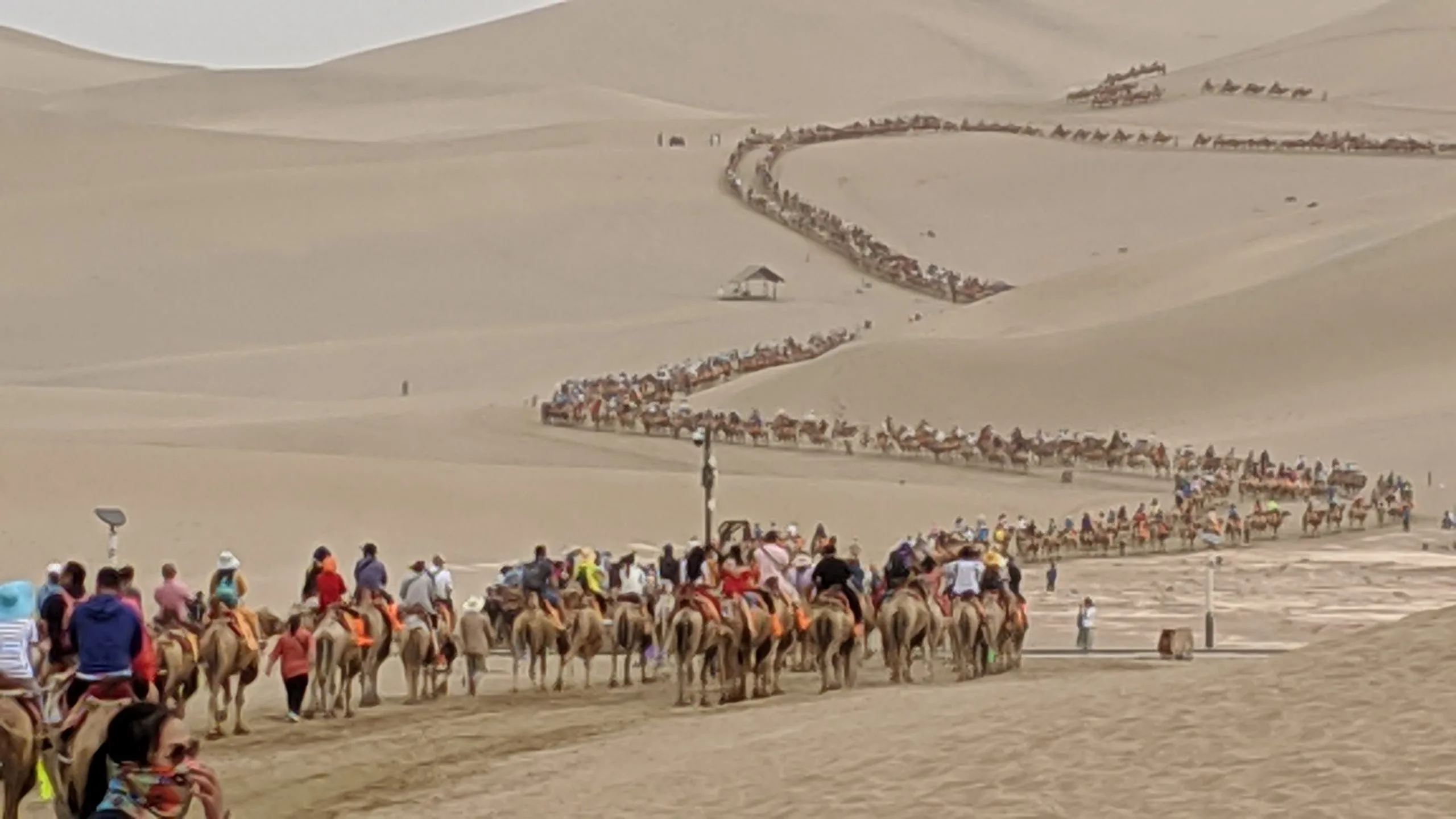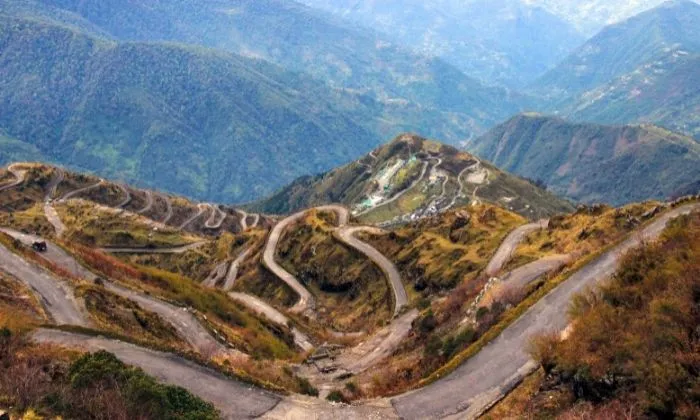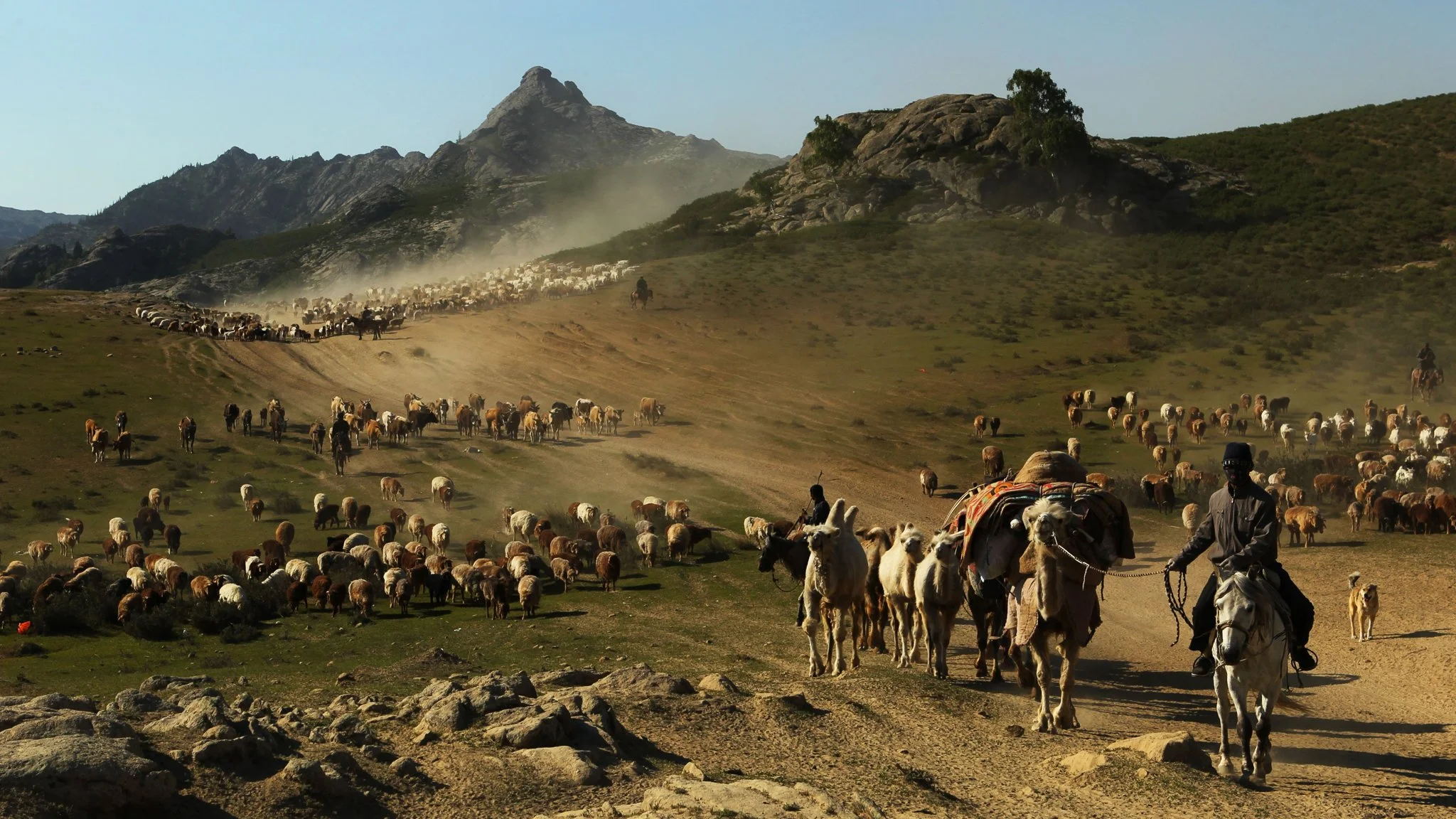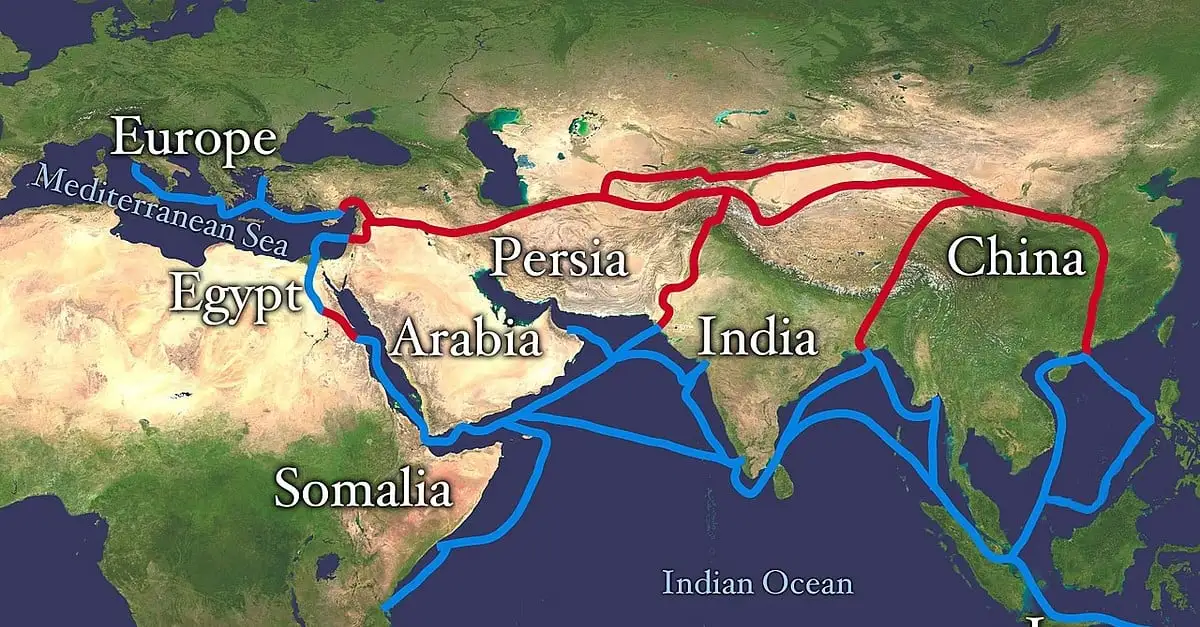In times long before our modern means of transportation and communication, a remarkable network of trade routes known as the Silk Road crisscrossed the vast are of Eurasia. This web of paths linked together distant corners of the continent, enabling the exchange of goods, ideas, people, and even diseases. Spanning approximately 1,500 years, from the 2nd century BCE to the mid-15th century CE, the Silk Road left an indelible mark on history, shaping the course of societies and civilizations.
Origin of the Silk Road
The name “Silk Road” evokes the luxurious textiles that were among the most coveted commodities traversing these routes. The creation of silk from the protein fiber of silkworms was an ancient Chinese art that dates back to around 2700 BCE. China guarded this secret for centuries, and those who dared to reveal the method of silk production to foreigners risked severe punishment, even death. Yet, over time, knowledge of silk-making began to seep out, finding its way to India and Japan.

The early foundations of the Silk Road can be traced to the expansion of China’s Han Dynasty into Central Asia during the 2nd century BCE. Seeking to establish diplomatic ties and identify potential trading partners, an envoy led by General Zhang Qian embarked on a pioneering mission to explore this uncharted realm.
Zhang Qian’s journeys are often regarded as the catalyst for the Silk Road’s emergence, earning him the title of the “pioneer of the Silk Road.” Concurrently, during the 1st century BCE, the Roman Empire was gaining prominence as a global superpower and developed a fondness for the exquisite silk from the East.
The Extent of the Silk Road

The Silk Road was a complex network of interconnected routes that extended across vast geographical regions. These routes traversed East Asia, the Indian subcontinent, Central Asia, the Middle East, and even parts of East Africa, ultimately culminating in Europe. While the specific paths taken varied, collectively, they covered an astonishing distance of around 6,400 kilometers (approximately 4,000 miles). This extensive network facilitated trade and cultural exchange, fostering the growth of settlements and trading posts along the way.
What was traded along the Silk Route?
Silk may have kickstarted the trade routes, but it was by no means the only commodity exchanged. East Asia contributed a diverse array of goods, including tea, spices, perfumes, and porcelain. In return, Europe exported its own treasures, such as artworks, honey, wines, and precious metals. Among the most transformative exports from China were paper and gunpowder. While paper revolutionized the spread of knowledge and information, gunpowder ushered in a new era of warfare, shaping the course of world history.

Yet, the Silk Road was not solely a conduit for luxurious items. Scientific evidence suggests that parasitic infections, including the Chinese liver fluke, were transmitted along these routes, highlighting the unintended consequences of intercontinental exchange. Tragically, the Silk Road may have also played a role in the transmission of the Black Death in the 14th century, contributing to the devastating loss of millions of lives.
Beyond trade, the Silk Road served as a bridge for the exchange of ideas, cultures, and beliefs. The spread of religions such as Buddhism, Christianity, and Islam was facilitated by this network, connecting people across Eurasia. One of the most renowned figures to traverse the Silk Road was the Venetian merchant Marco Polo, whose written accounts offered valuable insights into the lands he visited, including the Middle East, Central Asia, and China.
Despite facing challenges like the Black Death and Mongol conquests, the Silk Road endured until the Middle Ages. By the 15th century CE, its significance waned, owing to the rise of the Ottoman Empire and the Age of Discovery in Europe. The Ottoman Empire’s control over key routes and Europe’s newfound maritime capabilities rendered the Silk Road less crucial for trade.

Though the Silk Road’s heyday had passed, its impact continued to reverberate through time. Today, China‘s ambitious Belt and Road Initiative seeks to create a modern-day Silk Road, enhancing connectivity and trade across continents. This initiative, often referred to as the “New Silk Road,” exemplifies the enduring legacy of this historic network.
In retrospect, the Silk Road stands as a testament to the remarkable interplay of commerce, culture, and human interaction. Its threads, woven across centuries, continue to shape our world, reminding us of the power of connectivity and exchange in shaping the course of history.









